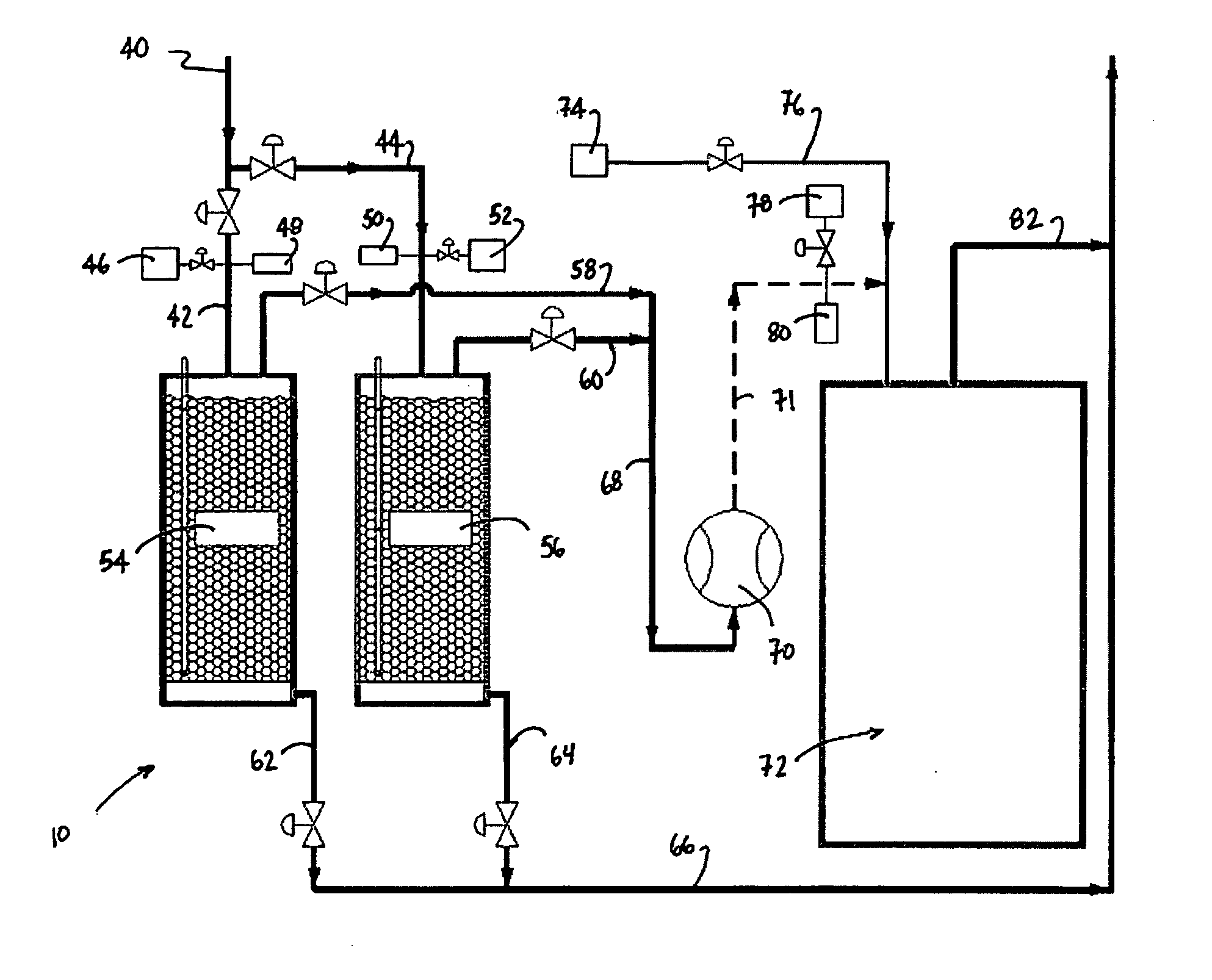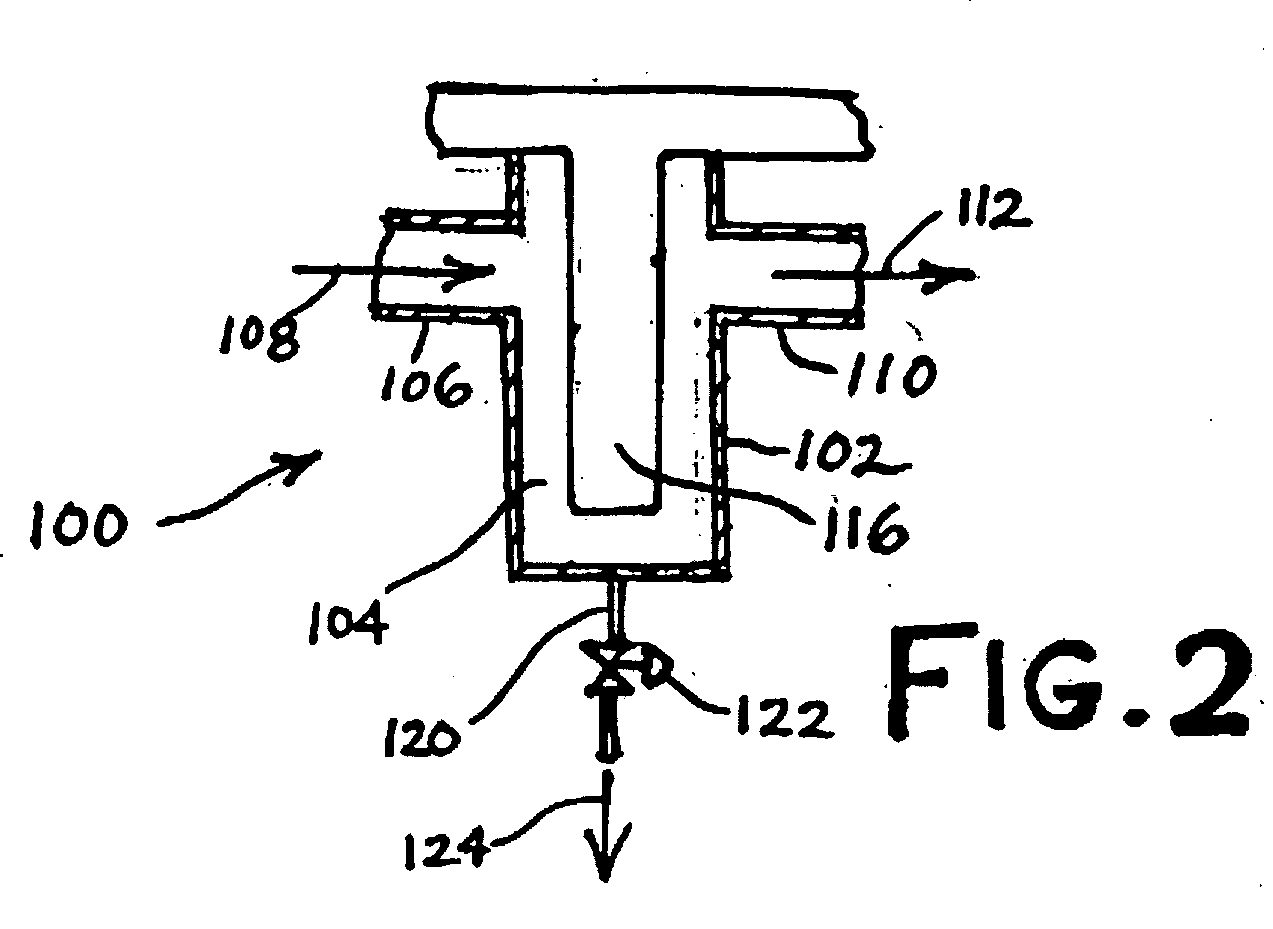Method and apparatus for the recovery of volatile organic compounds and concentration thereof
a volatile organic compound and recovery method technology, applied in the direction of chemistry apparatus and processes, dispersed particle separation, separation processes, etc., can solve the problems of thermal oxidation being economically burdensome, increasing the capital cost of semiconductor manufacturing process facilities, and affecting the efficiency of catalyst oxidizers
- Summary
- Abstract
- Description
- Claims
- Application Information
AI Technical Summary
Problems solved by technology
Method used
Image
Examples
Embodiment Construction
[0031] The method and apparatus of the present invention are usefully employed for recovery and concentration of Volatile Organic Compounds (VOCs) from the exhaust stream of a semiconductor manufacturing operation, thereby reclaiming VOCs which, in the absence of the recovery and concentration approach of the present invention, would simply pass through the facility and be discharged to the facility's waste treatment system(s), e.g., a central oxidizer unit of a semiconductor facility.
[0032] The method and apparatus of the invention correspondingly achieve a substantial reduction in the cost of manufacturing semiconductor products, by achieving reductions in the requirements of effluent abatement and disposal for the semiconductor manufacturing facility. Since the recovered VOCs have value when reclaimed and reused, the present invention also achieves a substantial reduction of costs of production for the semiconductor manufacturing facility. For example, VOCs can be reclaimed in c...
PUM
| Property | Measurement | Unit |
|---|---|---|
| pressure | aaaaa | aaaaa |
| power | aaaaa | aaaaa |
| inlet pressures | aaaaa | aaaaa |
Abstract
Description
Claims
Application Information
 Login to View More
Login to View More - R&D
- Intellectual Property
- Life Sciences
- Materials
- Tech Scout
- Unparalleled Data Quality
- Higher Quality Content
- 60% Fewer Hallucinations
Browse by: Latest US Patents, China's latest patents, Technical Efficacy Thesaurus, Application Domain, Technology Topic, Popular Technical Reports.
© 2025 PatSnap. All rights reserved.Legal|Privacy policy|Modern Slavery Act Transparency Statement|Sitemap|About US| Contact US: help@patsnap.com



